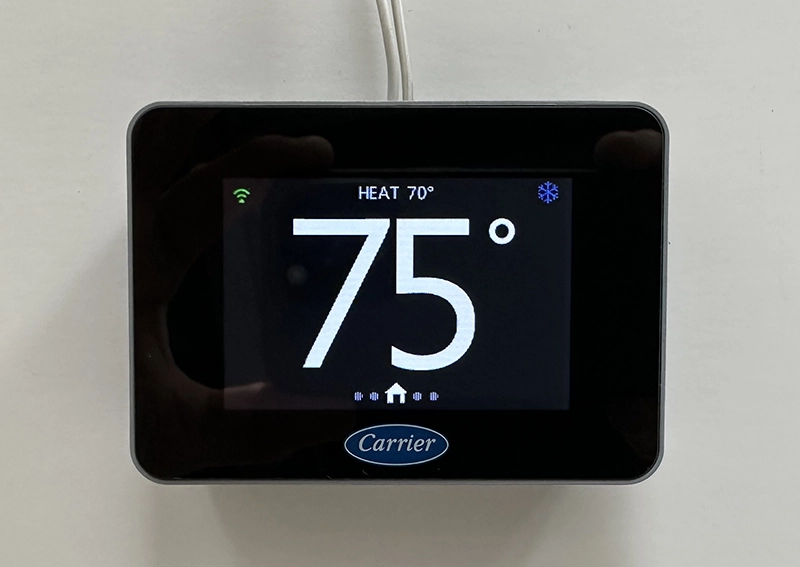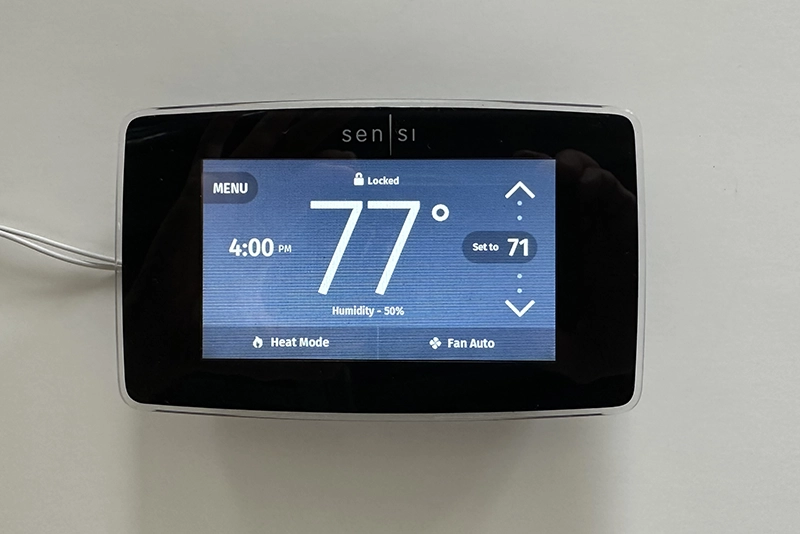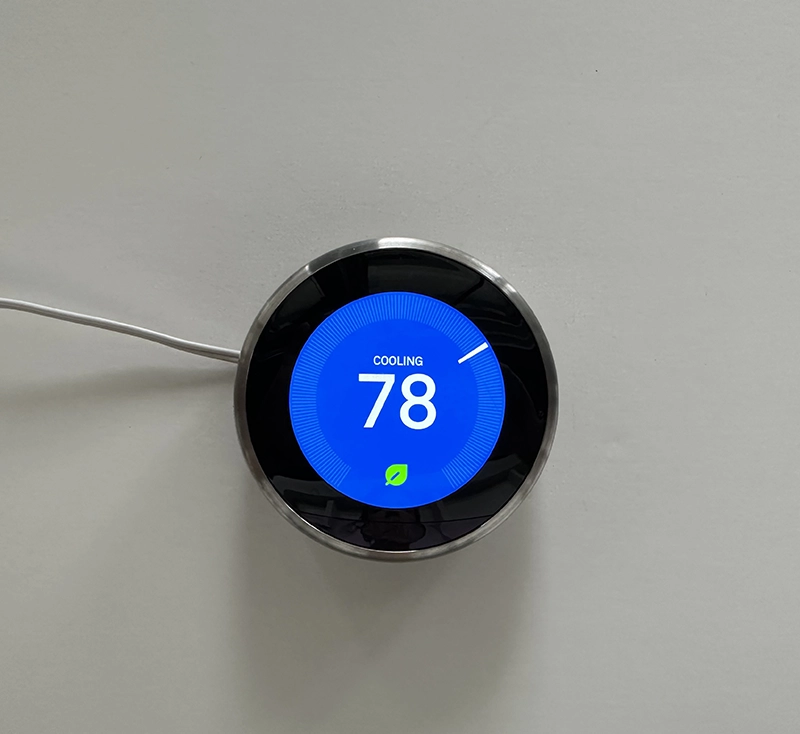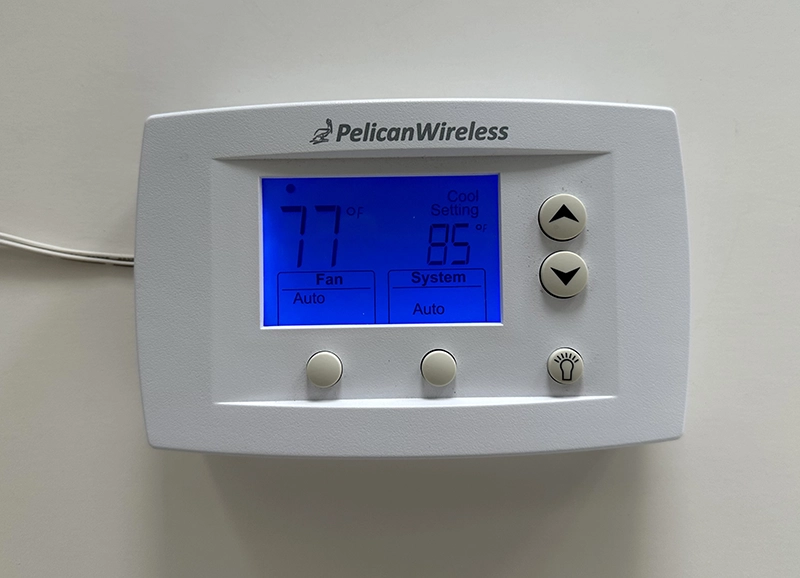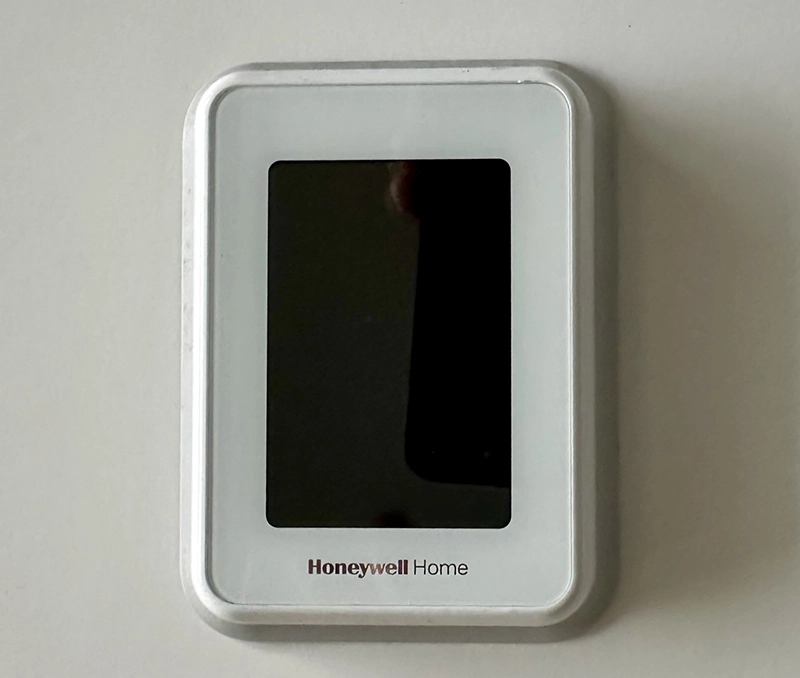The Carrier Connect WiFi Thermostat controls up to 4 heating stages and 3 cooling stages. The thermostat can enable demand response through utility programs. It automatically retrieves time, date and outdoor air temperature when connected to Wi-Fi and sports an auto-dimming display that lights up as you approach.
- Remote sensors (including occupancy, return air or fault) and outdoor air temperature through Internet weather
- Option for humidity/economizer control
The Ecobee supports up to two stages of heating and cooling for conventional systems and heat pumps. Ecobee has optional air quality monitoring, remote occupancy/temperature sensors, and HVAC accessory (ventilator, HRV). Ecobee works with demand response programs and communicates via Wi-Fi. The thermostat provides alerts for freeze protection.
- On-board radar occupancy, VOC/CO2; remote wireless occupancy/temperature sensors
- Pairs with other systems (cameras etc); option for door/window sensors
The Emerson Sensi Touch Smart thermostat has a mobile app to control multiple thermostats. The thermostat connects to WiFi and support geofencing.
- Remote occupancy through geofencing
The Google Nest thermostat supports up to three heating/two cooling stages (conventional), and two heating/cooling stages with auxiliary heat (heat pumps). Nest learns temperature preferences to create a schedule and has an on-board occupancy sensor. Its Rush Hour Rewards program enables participation in utility demand response. Nest connects through Wi-Fi.
- On-board motion (occupancy) sensor and outdoor temperature through Internet weather
- Pairs with other systems (cameras etc)
The NT thermostat supports up to two stages for heating and cooling (conventional) and up to 3 stages of heating/2 cooling for heat pumps. NT can support carbon dioxide sensing. The thermostat provides 19 alerts (such as hi/lo temperature alerts). BACnet/IP and Modbus TCP/IP over WiFi.
- Optional Carbon Dioxide sensor; remote sensors (including occupancy)
- Auxiliary system sensors (door/windows, freezer, SAT) and option for humidity control
- Operation even during network outages
The Pelican thermostat supports up to two stages of heating and cooling for both conventional systems and heat pumps. The mobile and web interface allow grouping of zones; monitoring HVAC operation provides alerts and notifications. The Pelican has optional on-board CO2 sensors. The thermostat communicates through a proprietary wireless network.
- On-board Carbon Dioxide sensors
- Option for humidity, economizer control
The Honeywell Home advanced thermostat boasts flexible scheduling: no schedule, time-based schedule, the ability to control based on occupancy (through location geo-fencing, or with additional sensors and an active-priority occupancy algorithm). The thermostat uses WiFi and has a mobile app.
- Remote sensors (including occupancy) and outdoor temperature through Internet weather
The Pivot smart thermostat by Trane has mobile app to control multiple buildings and set events. The thermostat can be connected via Ethernet or WiFi.
- Remote indoor/outdoor temperature sensors (or use Internet weather)
- Option for humidifier, UV, ventilation/economizer control
- Contractor portal for remote diagnostics

